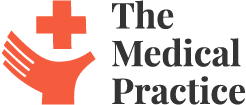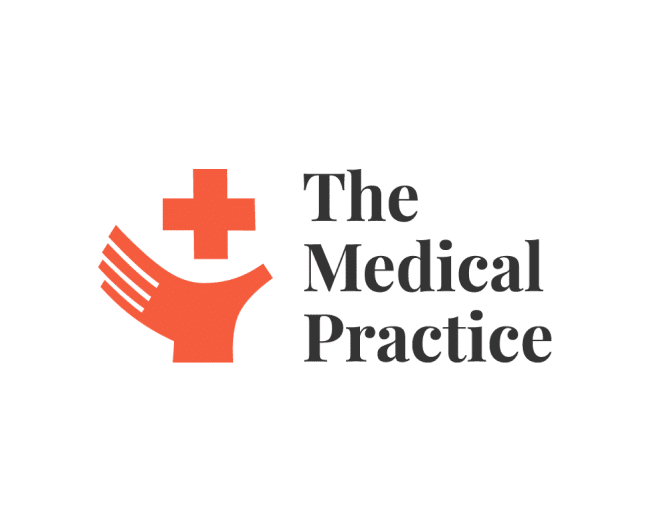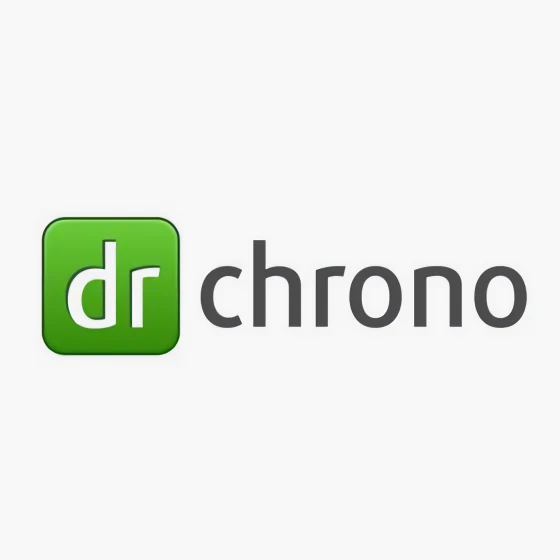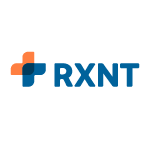10 Best Occupational Health Software Shortlist
Here's my pick of the 10 best software from the 27 tools reviewed.
Our one-on-one guidance will help you find the perfect fit.
I understand the complex challenges you face: maintaining comprehensive electronic medical records (EMR), managing immunization and drug testing, ensuring HIPAA compliance, and more. Navigating these tasks while focusing on providing quality physical therapy and other health services can be a daunting task, and this is where occupational health software comes into play.
Occupational health software is a powerful tool designed to streamline charting, improve revenue cycle management, and enhance profitability by automating and integrating key aspects of occupational health services. The benefits of such a tool are its ability to help clinicians effectively manage medical information, adhere to OSHA regulations, and ultimately increase efficiency in their practice.
One of the primary pain points it addresses is the time-consuming process of manual charting and record-keeping. Occupational health software simplifies this process, allowing you to invest more time in patient care. It also takes the stress out of regulatory compliance, with built-in features tailored to meet the stringent requirements of bodies like OSHA and HIPAA.
By choosing the right occupational health software, you'll be taking a significant step toward a more efficient, compliant, and profitable practice.
What Is Occupational Health Software?
Occupational health software serves as a vital tool for businesses aiming to prioritize employee wellness and safety. Primarily used by human resources, safety managers, and health practitioners; this software manages various facets of workplace health, including compliance with health and safety regulations, employee training, and injury prevention.
The software not only mitigates occupational risks but also helps improve productivity by maintaining a healthy work environment. From processing employee health records to organizing health-related training programs, occupational health software is a one-stop solution for nurturing an ethos of well-being in the workplace.
Best Occupational Health Software Summary
| Tool | Best For | Trial Info | Price | ||
|---|---|---|---|---|---|
| 1 | Best for cloud-based clinical documentation | Free demo available | Pricing upon request | Website | |
| 2 | Best for streamlining clinical workflows | Not available | From $429/user/month, (billed annually). | Website | |
| 3 | Best for integrating EHR with practice management | Free demo available | From $199/user/month (billed annually) | Website | |
| 4 | Best for customizable patient management | Not available | From $100/user/month | Website | |
| 5 | Best for specialized occupational therapy support | Not available | From $149/user/month | Website | |
| 6 | Best for efficient billing and scheduling | Not available | From $125/user/month | Website | |
| 7 | Best for ease of use in patient and practice management | Not available | From $299/user/month | Website | |
| 8 | Best for utilizing AI to improve workplace safety | Not available | From $15/user/month (billed annually) | Website | |
| 9 | Best for extensive safety training resources | Not available | From $20/user/month | Website | |
| 10 | Best for comprehensive incident management | Not available | From $10/user/month | Website |
Best Occupational Health Software Reviews
Athena Health is a versatile healthcare software platform that focuses on providing a range of cloud-based services, including electronic health records (EHR), medical billing, and patient engagement. The cloud-based clinical documentation offered by Athena Health simplifies record-keeping and allows for enhanced coordination among healthcare providers.
Why I Picked Athena Health:
In the course of my research, I selected Athena Health due to its strong emphasis on cloud-based services, specifically clinical documentation. Its approach to digital, cloud-based record-keeping makes it stand out from other tools in this space, offering healthcare providers an efficient way to maintain and access important clinical documents. This led me to conclude that Athena Health is 'Best for cloud-based clinical documentation.'
Standout features and integrations:
Athena Health offers several essential features, such as customizable dashboards, streamlined scheduling, and robust billing solutions. Importantly, the platform integrates seamlessly with numerous third-party apps, including popular e-prescribing, telehealth, and patient engagement tools, providing an all-inclusive solution for healthcare providers.
Pros and cons
Pros:
- Customizable dashboards and robust billing solutions
- Integration with numerous third-party apps
- Efficient cloud-based clinical documentation
Cons:
- Learning curve for those unfamiliar with cloud-based systems
- May be more features than needed for some practices
- Price may be high for smaller practices
AdvancedMD is an all-in-one occupational health software aimed at automating clinical operations. It offers features to manage patient records, streamline scheduling, improve patient communication, and simplify billing, making it ideal for streamlining clinical workflows.
Why I Picked AdvancedMD:
I picked AdvancedMD because of its extensive functionalities designed to cover all aspects of clinical operations. The software's attention to detail, be it in managing electronic health records or facilitating seamless patient communication, convinced me of its uniqueness. For these reasons, I believe AdvancedMD is the best tool for enhancing efficiency in clinical workflows.
Standout features and integrations:
The software's advanced EHR and practice management modules are impressive, allowing for a seamless flow of information across the practice. Patient engagement tools such as a patient portal and telehealth capabilities make communication more straightforward. AdvancedMD integrates with several third-party applications, including billing services and healthcare databases, offering a comprehensive healthcare management solution.
Pros and cons
Pros:
- Wide range of integrations with third-party services
- Patient engagement features including a patient portal
- Robust EHR software and practice management software
Cons:
- Limited customization options
- Steeper learning curve for new users
- Higher cost compared to other options
DrChrono is a healthcare IT platform that encompasses an EHR, practice management, and a medical billing solution in one system. It makes a significant impact by seamlessly integrating EHR with practice management, which is critical for efficient healthcare delivery.
Why I Picked DrChrono:
In my selection process, DrChrono emerged as a versatile tool due to its ability to merge EHR and practice management. It offers a level of integration that stands out among its competitors.
I judged it to be the 'Best for integrating EHR with practice management' as it allows health practitioners to streamline patient health information, billing, and scheduling within a single platform, increasing efficiency and reducing administrative burdens.
Standout features and integrations:
DrChrono's comprehensive features include medical billing, appointment reminders, EHR, and customizable medical forms. Its e-prescribing and lab integrations further streamline workflows. The tool is compatible with various third-party applications, such as billing and coding services, enhancing its functionality and adaptability.
Pros and cons
Pros:
- Customizable medical forms
- Compatibility with third-party applications
- Integrated EHR and practice management system
Cons:
- Interface may have a learning curve for some users
- Some features may require additional fees
- Higher starting price compared to other similar platforms
Harmony Medical is a healthcare software system that focuses on providing highly customizable solutions for patient management. The platform allows for personalized patient experiences and efficient tracking of health records, making it exceptionally suitable for practices seeking customizable patient management.
Why I Picked Harmony Medical:
I chose Harmony Medical because its offerings go beyond standard patient management solutions. Its emphasis on customization caught my attention, which distinguishes it from other tools. Based on my assessment, Harmony Medical stands out as the best for customizable patient management, given its robust feature set that allows healthcare professionals to tailor the software to their specific needs.
Standout features and integrations:
Harmony Medical boasts features like detailed patient tracking, customized templates for health records, and intuitive scheduling tools. Notably, its customization capabilities extend to workflow management, ensuring that the platform aligns with the unique processes of each medical practice. Its compatibility with various medical devices and integration with third-party apps like billing software amplifies its usability.
Pros and cons
Pros:
- Detailed tracking for patient health records
- Integration with numerous medical devices and third-party apps
- Extensive customization options for patient management
Cons:
- Limited customer support hours
- Potential learning curve due to extensive features
- Pricing can escalate with add-ons
NetHealth is a comprehensive electronic health record (EHR) platform focused on specialized healthcare sectors such as occupational therapy. It goes beyond standard EHRs by incorporating specialized support for occupational therapists, enabling them to enhance patient care.
Why I Picked NetHealth:
When I was comparing various EHR platforms, I selected NetHealth for its emphasis on specialized healthcare sectors. Its unique focus on occupational therapy support differentiates it from generic EHRs, allowing practitioners in this field to leverage specialized tools tailored to their unique needs. Thus, I determined it as 'Best for specialized occupational therapy support.'
Standout features and integrations:
NetHealth boasts an array of robust features that are custom-built for occupational therapists, including detailed patient records, specialized workflows, and robust reporting tools. Furthermore, it integrates with leading practice management systems, streamlining processes for practitioners in specialized fields.
Pros and cons
Pros:
- Detailed patient records and reporting tools
- Integration with leading practice management systems
- Specialized support for occupational therapists
Cons:
- User interface might require a learning curve for some users
- May have features that are not useful for practitioners outside of occupational therapy
- Higher starting price compared to generic EHR platforms
EZClaim is a medical billing and scheduling software designed to streamline administrative tasks in healthcare facilities. Its robust features improve efficiency and accuracy in billing and scheduling processes, making it an ideal choice for organizations that want to enhance these areas.
Why I Picked EZClaim:
In my judgment, EZClaim offers a compelling blend of features that specifically target billing and scheduling efficiency. I picked this tool for its comprehensive yet user-friendly interface that sets it apart in the crowded field of medical software. It's clear to me that EZClaim stands out as the 'Best for efficient billing and scheduling' due to its potent combination of features and ease of use.
Standout features and integrations:
Among the notable features of EZClaim are its comprehensive scheduling tools, claim scrubbing capabilities, and the ability to handle both paper and electronic billing. It also provides useful data analytics that can help improve operational efficiency. EZClaim integrates seamlessly with popular electronic health records (EHR) systems and can also work with various payment processing tools.
Pros and cons
Pros:
- User-friendly interface
- Integrates well with EHR systems and payment processors
- Comprehensive billing and scheduling features
Cons:
- Limited customization options
- Lacks some advanced features found in competitors
- Pricing can get high with additional features
MDConnection is a web-based medical practice management solution designed to optimize administrative processes for healthcare providers. It offers a user-friendly interface and intuitive features for patient and practice management, making it an excellent choice for ease of use in these domains.
Why I Picked MDConnection:
MDConnection stood out to me because of its straightforward and intuitive interface. In my analysis, its simplicity sets it apart from other similar tools. I chose it as the 'Best for ease of use in patient and practice management' due to the accessible layout and easy-to-understand functionalities it offers, even to non-tech savvy users.
Standout features and integrations:
MDConnection provides an array of key features, including appointment scheduling, medical billing, and detailed reporting. It also has robust patient management features like patient registration, records management, and appointment reminders. It integrates smoothly with many electronic health record systems, making it an adaptable tool for various practice settings.
Pros and cons
Pros:
- Seamless integration with various EHR systems
- Comprehensive patient and practice management features
- User-friendly and intuitive interface
Cons:
- Additional costs for extra features
- Limited customization options
- Higher starting price compared to some competitors
Intenseye harnesses the power of artificial intelligence (AI) to ensure a safe and healthy workplace environment. This software tool specializes in analyzing working conditions and identifying potential risks in real-time, making it stand out as a solution for AI-powered workplace safety.
Why I Picked Intenseye:
In my quest to find software that uniquely leverages AI to promote safety, Intenseye emerged as the most compelling option. What caught my attention is its capacity to analyze hundreds of hours of video in seconds, making it the best for proactively identifying safety hazards and preventing accidents.
Standout features and integrations:
Intenseye's AI-backed safety analysis is a game changer. It allows real-time tracking of safety gear usage and potential safety violations. Moreover, its deep learning algorithms provide accurate predictions of safety risks, which helps prevent accidents before they occur.
Intenseye offers crucial integrations with existing camera systems, enabling businesses to leverage their current infrastructure. Additionally, it integrates well with HR and EHS management systems, ensuring a unified approach to occupational safety.
Pros and cons
Pros:
- Seamless integration with existing camera systems
- Robust AI and deep learning algorithms
- Efficient real-time safety risk analysis
Cons:
- Custom integrations with some EHS systems might be lacking
- The user interface might require a learning curve
- The pricing is only available as an annual subscription
BIS Safety offers a comprehensive platform focused on delivering robust occupational safety training resources. It supports the creation, delivery, and tracking of training, aligning itself as the best solution for businesses seeking extensive safety training resources.
Why I Picked BIS Safety:
In my search for a tool with abundant safety training resources, BIS Safety stood out. The selection was based on its vast library of ready-to-use courses and the ability to create custom training, which makes it highly flexible and adaptable to various business needs. I believe BIS Safety is best for companies that value in-depth, customizable safety training.
Standout features and integrations:
BIS Safety's standout features include its wide array of customizable, industry-specific safety courses. The platform also supports multimedia-rich content, making the learning process more engaging. BIS Safety integrates with various systems, including HRIS, LMS, and more, allowing efficient information exchange and management across different platforms.
Pros and cons
Pros:
- Seamless integration with various systems
- Ability to create customizable training
- Extensive library of safety courses
Cons:
- Customer service response times could be improved
- A more complex interface may require training
- Higher cost compared to some alternatives
Salus is an exceptional tool geared toward improving occupational safety by offering comprehensive incident management. With a suite of powerful features, it helps businesses manage, track, and prevent workplace incidents effectively, establishing itself as the best solution for comprehensive incident management.
Why I Picked Salus:
Salus was selected for its robust and comprehensive incident management capabilities. Its distinguishing feature lies in its ability to manage incidents effectively from start to finish, tracking every detail and ensuring preventative measures are put in place. This comprehensive coverage of incident management made it the optimal choice in this category.
Standout features and integrations:
Salus offers a suite of features that enable detailed incident reporting, in-depth investigations, and risk assessments, making it invaluable for safety management. It's also known for its intuitive dashboard that allows easy tracking of all incidents and subsequent actions.
When it comes to integrations, Salus stands strong with its compatibility with numerous HR systems, reporting tools, and third-party applications, ensuring a seamless flow of information across various platforms.
Pros and cons
Pros:
- Wide range of integrations with third-party applications
- User-friendly interface for easy tracking
- Detailed incident management and reporting
Cons:
- Customer support might need improvement
- Could be over-complex for small businesses
- Minimum of 5 seats required for pricing
Other Occupational Health Software Tools
Below is a list of additional Occupational Health Software that I shortlisted but did not make it to the top 10. Definitely worth checking them out.
- Ideagen EHS
For global regulatory compliance
- everbridge
Good for critical event management
- Tebra
For its all-in-one healthcare platform
- Lucidity
Good for data-driven safety and risk management
- Safetymint
Good for digitizing and streamlining safety processes
- 1Life
Good for comprehensive workplace safety solutions
- SafetyStratus
Good for facilitating enterprise safety programs
- Camms
Good for risk-based decision making
- EnterpriseHealth
Good for managing occupational health and compliance
- HSI Donesafe
Good for health and safety management across multiple industries
- SafetyLine
Good for ensuring the safety of lone workers
- Workhub
Good for safety training and tracking
- SafetySuit
Good for ensuring compliance with safety regulations
- SAI360
Good for integrated risk management solutions
- Aclaimant
Good for incident management and workplace safety
- Protector by Vatix
Good for worker safety with real-time location tracking
- EcoOnline
Good for environmental compliance and sustainability
Selection Criteria
As a software reviewer, I have invested significant time evaluating various tools to find the best ones. In the case of occupational health and safety software, I've tried out more than 20 tools and focused my attention on specific functionalities that are essential for managing health and safety in the workplace.
Core Functionality:
- Incident reporting: The software should facilitate easy reporting of any workplace incidents or hazards.
- Risk assessment: The software should enable the user to conduct risk assessments to prevent potential incidents.
- Compliance management: The software should assist in staying compliant with health and safety regulations.
Key Features:
- Real-time alerts: The software should provide instant notifications about safety incidents or potential risks.
- Training management: The software should allow you to manage and track health and safety training for employees.
- Analytics and reports: The software should offer comprehensive data analysis and report generation for informed decision-making.
Usability:
- Intuitive interface: As these tools are often used in stressful situations, they should have a clear, intuitive interface that's easy to navigate.
- Role-based access: The software should allow different levels of access based on user roles (e.g., managers, safety officers, and regular employees) to ensure relevant access and functionality.
- Efficient onboarding: Given the seriousness of health and safety matters, these tools should have efficient onboarding processes, ideally featuring a learning library or training program for new users.
- Quality customer support: Given the importance of health and safety, fast and reliable customer support is crucial. This can include a variety of channels, like email, phone, or live chat support.
People Also Ask (FAQs)
What are the benefits of using occupational health software?
Using occupational health software can offer numerous advantages, including:
- Improved Compliance: These tools can help businesses comply with health and safety regulations, thus avoiding penalties and lawsuits.
- Enhanced Safety: They enable systematic reporting and management of incidents, reducing workplace hazards and promoting a safer environment.
- Streamlined Processes: They automate several processes like incident reporting and risk assessments, saving time and resources.
- Informed Decision Making: With analytics and reporting features, businesses can make data-driven decisions to improve workplace safety.
- Efficient Training Management: These tools can help manage and track health and safety training for employees, ensuring everyone is up-to-date with best practices.
How much does occupational health software cost?
The cost of occupational health software varies greatly depending on the tool, the features it offers, and the number of users.
What are the common pricing models for these tools?
The common pricing models include subscription-based (usually monthly or annually), per-user pricing, or tiered pricing based on the feature set. Some offer a one-time licensing fee, while others may have a freemium model where basic features are free and advanced features are paid.
What is the typical range of pricing for these tools?
The typical pricing range can be anywhere from $10/user/month to over $100/user/month for more advanced, enterprise-level solutions.
Which are the cheapest and most expensive software?
While the pricing can vary greatly, on the cheaper end of the spectrum, tools like SafetyStratus offer plans starting around $10/user/month. On the more expensive end, offerings like EnterpriseHealth can exceed $100/user/month.
Are there any free options for occupational health software?
While most occupational health software comes with a cost, some offer free trials or basic free versions with limited functionality. It’s important to research and compare tools to find the one that best fits your needs and budget.
Other Occupational Health-Related Software Reviews
Summary
In wrapping up, understanding the landscape of occupational health software is crucial for making an informed decision that fits your specific use case. These tools can significantly streamline the management of health records, compliance with regulations, and engagement of employees in their well-being.
Key Takeaways:
- Alignment with Needs: Occupational health software varies significantly in its offerings. Some provide comprehensive solutions covering everything from EHRs to practice management, while others focus on specialized support, such as occupational therapy. Understanding the specific requirements of your organization will greatly assist in selecting the best software.
- Importance of Integrations: A standout software often allows seamless integration with existing systems. This feature is vital for smooth data transfer and for avoiding operational disruptions. Evaluate each software on the range and ease of its integrations.
- Value for Money: While pricing models of these tools can range widely, it's important not to merely look for the cheapest option. Consider the tool's offerings, the support it provides, and the difference it could make in your operational efficiency. Always aim for a solution that offers the best value for your investment.
What Do You Think?
We're always looking to expand our insights and learn about other effective tools in the occupational health software space. If you're using a tool that you find exceptionally useful and isn't on our list, please let us know.
Your suggestions and feedback can be invaluable in helping us deliver the most comprehensive and up-to-date resources to our readers.

























